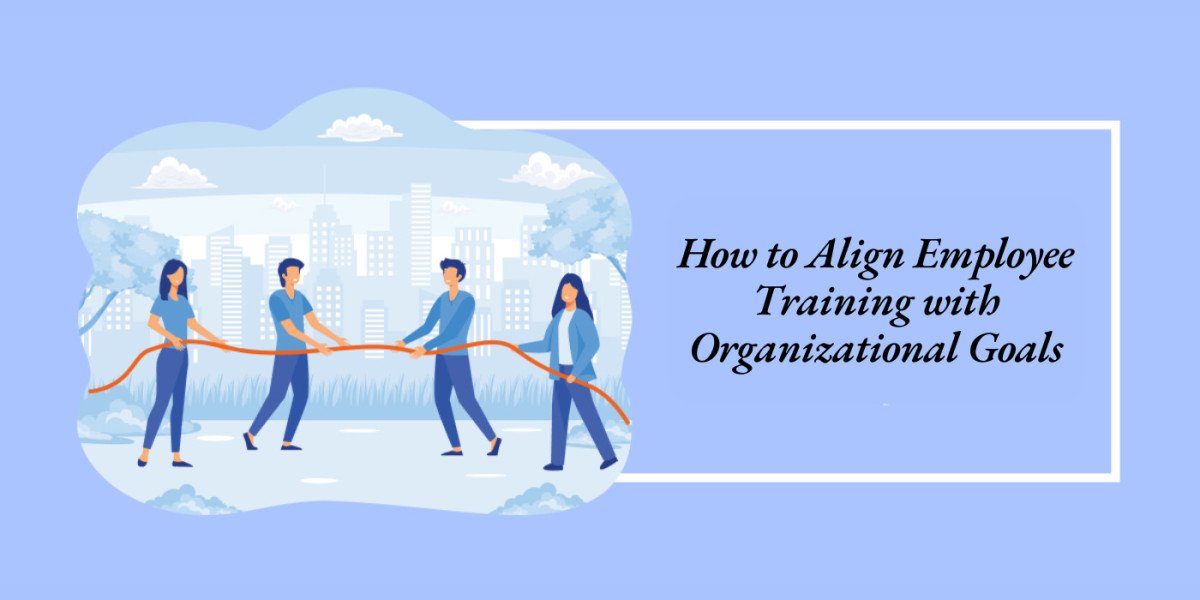Employee training is a crucial investment for any organization striving for long-term success. However, training programs often fail to yield desired results when they are not aligned with organizational goals. To maximize the impact of training initiatives, businesses must ensure that employee development efforts support broader business objectives. Aligning employee training with organizational goals enhances productivity, fosters innovation, and contributes to overall company growth.
In this article, we will explore effective strategies for aligning training programs with organizational objectives and ensuring that employees acquire the skills needed to drive business success.
Understanding Organizational Goals
Before designing an employee training program, organizations must first define their objectives clearly. These goals could include increasing revenue, improving customer satisfaction, enhancing operational efficiency, or fostering a strong company culture. Once these goals are established, training programs should be developed to support these key business outcomes.
For example, if an organization’s goal is to expand into new markets, training programs should focus on equipping employees with skills in market research, sales strategies, and cross-cultural communication. Similarly, if a company aims to improve customer satisfaction, training should emphasize customer service excellence and problem-solving skills.
Assessing Employee Skills and Training Needs
To align training with organizational goals, it is essential to assess employees' existing skills and identify skill gaps. A comprehensive skills assessment can help organizations determine which areas require improvement and what kind of training will be most beneficial.
Methods for Assessing Training Needs:
Performance Evaluations: Analyzing past performance reviews can reveal areas where employees need additional training.
Employee Surveys: Gathering feedback from employees can help identify their professional development interests and challenges.
Managerial Input: Supervisors can provide valuable insights into the skills their teams need to improve productivity.
Industry Trends: Keeping an eye on emerging industry trends ensures employees receive training in relevant and in-demand skills.
By conducting a thorough needs assessment, organizations can ensure that training programs are customized to address specific skill gaps and business priorities.
Designing Training Programs That Support Business Objectives
Once the training needs are identified, the next step is to develop programs that align with organizational goals. A well-structured training program should be designed with clear learning objectives that contribute to business success.
Key Elements of an Effective Training Program:
Relevance to Business Goals: Training content should be directly related to the company’s mission, vision, and strategic objectives.
Practical Application: Employees should be able to apply their learning to real-world job tasks.
Blended Learning Approaches: A mix of in-person training, online modules, and hands-on practice ensures a comprehensive learning experience.
Ongoing Learning Opportunities: Continuous training programs keep employees updated with industry changes and evolving job roles.
For instance, if a company is working on digital transformation, training should focus on technology adoption, data analytics, and cybersecurity awareness. If leadership development is a priority, the program should include mentorship, executive coaching, and decision-making skills training.
Leveraging Corporate Training Companies
Many organizations partner with corporate training companies in Mumbai to enhance their employee development initiatives. These companies offer expertise, customized training solutions, and innovative learning technologies that make training more effective.
Benefits of Working with Corporate Training Companies:
Expertise and Experience: Professional trainers bring industry knowledge and best practices to the learning experience.
Customized Training Programs: Training providers tailor content to align with an organization’s specific needs.
Access to Advanced Learning Tools: Training companies offer e-learning platforms, simulations, and interactive courses that enhance engagement.
Scalability: External training providers can deliver large-scale training programs across different locations.
By collaborating with corporate training companies, businesses can ensure that their workforce receives high-quality training aligned with strategic goals.
Measuring Training Effectiveness and Impact
Aligning training with organizational goals is only effective if the impact of the training can be measured. Organizations should establish clear metrics to evaluate the success of training programs.
Ways to Measure Training Effectiveness:
Employee Feedback: Surveys and interviews can provide insights into how well employees perceive the training.
Performance Improvement: Comparing employee performance before and after training helps determine the program’s effectiveness.
Business Outcomes: Metrics such as increased sales, improved customer satisfaction scores, and enhanced productivity indicate the success of training initiatives.
Knowledge Retention Tests: Assessments and quizzes can help gauge how well employees have absorbed the training material.
By tracking these metrics, organizations can refine their training strategies and continuously improve employee development efforts.
Creating a Culture of Continuous Learning
Training should not be a one-time event but an ongoing process. Organizations that prioritize continuous learning create a culture where employees are constantly developing new skills and adapting to industry changes.
Strategies to Promote Continuous Learning:
Encourage Self-Directed Learning: Provide employees with access to online courses, books, and other learning resources.
Implement Mentorship Programs: Pair employees with experienced mentors who can guide their professional development.
Recognize and Reward Learning Efforts: Acknowledge employees who actively participate in training and apply their knowledge in the workplace.
Regular Training Updates: Keep training programs relevant by updating content based on new industry trends and company goals.
When learning becomes an integral part of company culture, employees remain engaged, motivated, and better equipped to contribute to the organization’s success.
Aligning employee training with organizational goals is essential for maximizing the impact of learning and development efforts. By clearly defining business objectives, assessing training needs, designing goal-driven programs, leveraging the expertise of corporate training companies in Delhi, and measuring training effectiveness, organizations can ensure that their workforce is well-prepared to drive business success.
Moreover, fostering a culture of continuous learning ensures that employees remain adaptable and innovative in a rapidly evolving business environment. When training is aligned with strategic goals, companies can achieve sustained growth, improved performance, and a competitive advantage in their industry.









